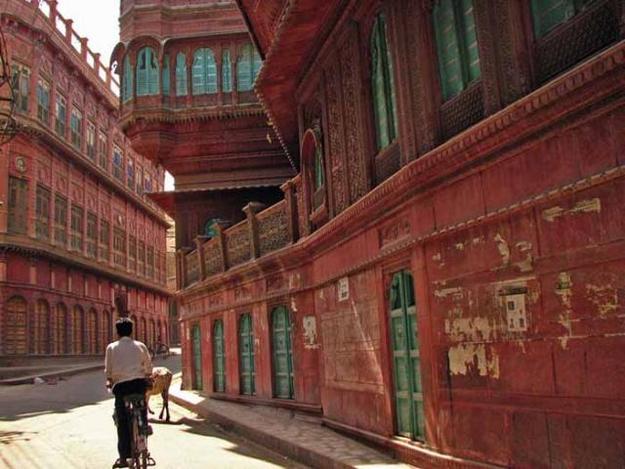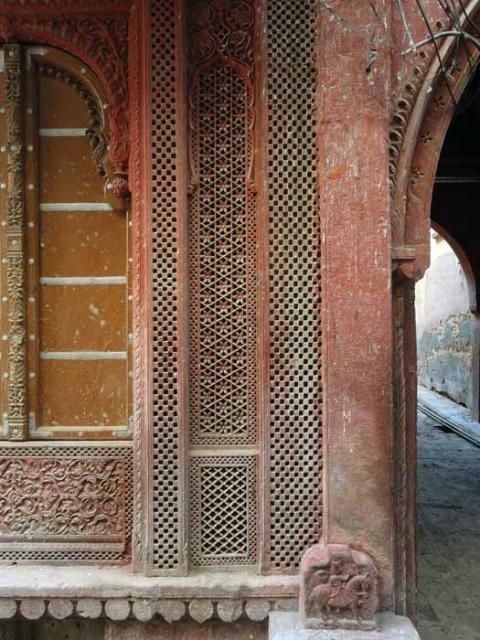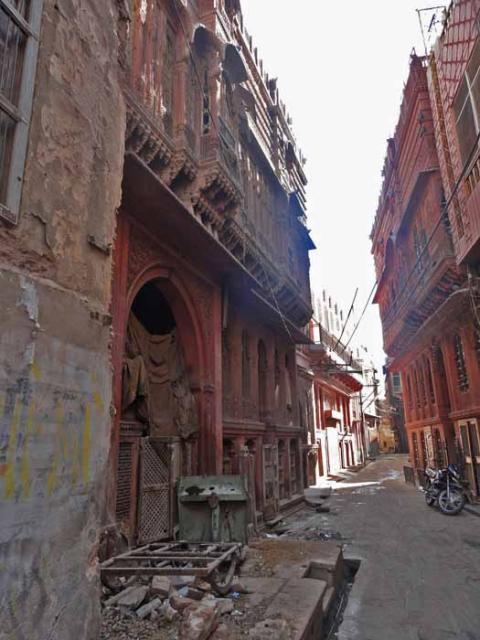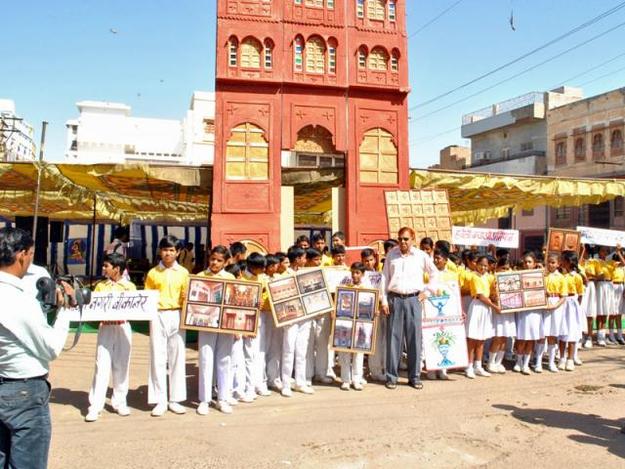Historic Havelis of Bikaner
2012 World Monuments Watch
Located in the Thar Desert of Rajasthan, the walled city of Bikaner is a dense urban settlement with narrow, winding lanes and buildings featuring highly ornamental street facades. Bikaner was established in the fifteenth century along a flourishing trade. A wealthy merchant class that profited from the trade route was responsible for the opulently decorated courtyard houses, known as havelis, which characterize the historic center of the city. Constructed in red sandstone with elaborately detailed façades, they show various influences ranging from Rajput and Mughal styles to British colonial detailing. The architecture and urban form of the walled city are both a response to the harsh arid climate of the region and a celebration of its building tradition, with delicately carved stone jaalis (perforated screens), stone chajjas (overhangs), and projecting jharokhas (balconies). When the havelis were included on the 2012 World Monuments Watch, over 400 of them survived in Bikaner. Dating from the seventeenth to the early twentieth centuries, these formerly grand homes had been subdivided, leading to their decay and overcrowding. Remote and largely untouched by the economic boom which India enjoyed in the years before the Watch announcement, Bikaner had seen little investment and limited tourism. The havelis were being demolished not as whole buildings but piece by piece, because the value of their architectural and artistic components is higher than that of the houses themselves. Modern constructions were replacing the havelis, which were afforded no heritage protection. Poor maintenance and a lack of waste disposal and drainage systems within the city compounded the challenges. All of these issues required urgent response in the form of a comprehensive strategy for urban policy and heritage protection. The havelis were included on the Watch in order to raise awareness locally and internationally about their significance and promote efforts to improve quality of life through the conservation of this historic urban landscape.
Watch Day
Watch Day was held in October 2012 in Bikaner to help spread awareness about the city’s built heritage and the need for greater stewardship of its architecture. Activities included an exhibition of artwork depicting the havelis and a heritage walk through the historic neighborhood with local students and community members.
Since the Watch
In April 2012, the celebration of World Heritage Day in Bikaner resulted in renewed activity in favor of preserving the havelis. This included the monitoring and publishing of information related to the buildings that were being demolished. Several months later interest in Bikaner’s historic architecture was further renewed by Watch Day, and preparations were made for the historic walking tours that visitors may take part in today. In 2015, Bikaner became part of the Indian Historic Cities Network (IHCN), a collaborative system of heritage experts and stakeholders in India. The IHCN is helping to document the city’s heritage in collaboration with the Bikaner Municipal Corporation. The first phase of this documentation project was completed in January 2017.




